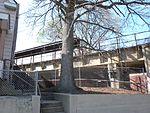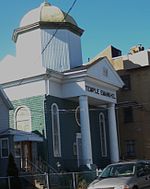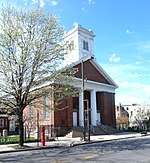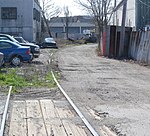Port Richmond, Staten Island

Port Richmond is a neighborhood situated on the North Shore of Staten Island, a borough of New York City. Port Richmond is bounded by Kill van Kull on the north, Jewett Avenue on the east, Forest Avenue on the south, and the Bayonne Bridge on the west. It is adjacent to West New Brighton to the east, Westerleigh to the south, and Elm Park and Mariners Harbor to the west. Formerly an independent village, it is one of the oldest neighborhoods on the island. In the 19th century it was an important transportation and industrial center of the island, but this role has vanished nearly completely, leaving a largely blue collar residential area bypassed by the shift of development of the island to its interior after the 1960s. The formerly bustling commercial center along Richmond Avenue (now Port Richmond Avenue) had been largely abandoned at the time, but many small businesses have opened in the area since the late 20th century. Port Richmond is part of Staten Island Community District 1 and its ZIP Code is 10302. Port Richmond is patrolled by the 121st Precinct of the New York City Police Department.
Excerpt from the Wikipedia article Port Richmond, Staten Island (License: CC BY-SA 3.0, Authors, Images).Port Richmond, Staten Island
Clove Road, New York Staten Island
Geographical coordinates (GPS) Address Nearby Places Show on map
Geographical coordinates (GPS)
| Latitude | Longitude |
|---|---|
| N 40.634 ° | E -74.126 ° |
Address
Clove Road 243
10310 New York, Staten Island
New York, United States
Open on Google Maps









